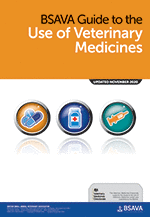
Full text loading...

PLEASE NOTE A NEW 2ND EDITION HAS BEEN PUBLISHED AND IS AVAILABLE HERE.
The use of cytotoxic drugs has become more common in veterinary medicine, and the standards of practice in the handling of drugs are evolving. This section covers the requirements for competence, risk assessment and control measures. Self-assessment questions are included. Last updated May 2020.
Cytotoxic drugs, Page 1 of 1
< Previous page | Next page > /docserver/preview/fulltext/10.22233/9781905319862/BSAVA_Medicine_Guide_2_9781905319862.5.18-20-1.gif

Full text loading...




